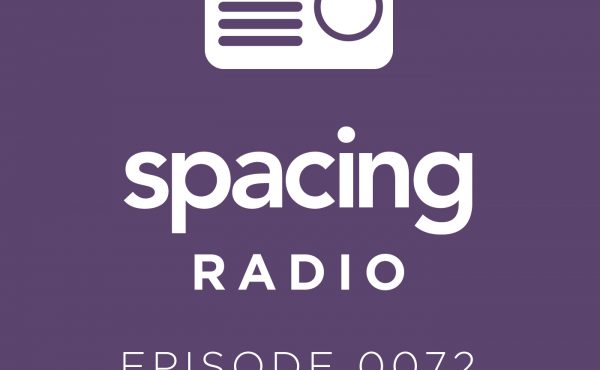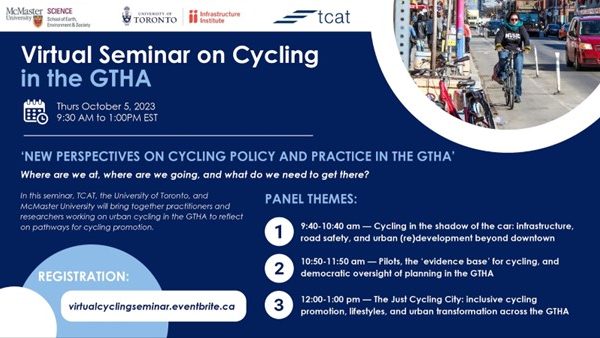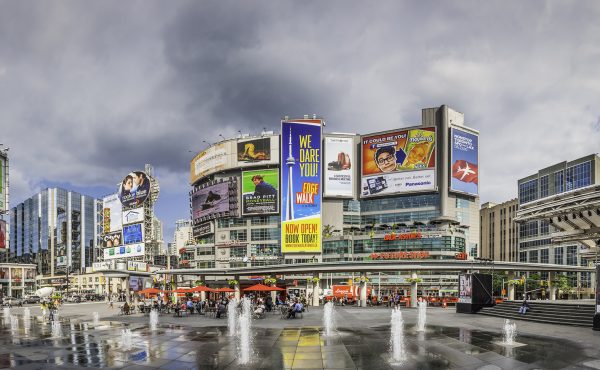
Mercifully, Toronto has so far been spared the smog days which have defined summers of the past. This respite from smog days however belies the true condition of the air we breathe and the toll that air pollution takes on each and every one of us. Air pollution and the broader category of public health have long been the great equalizer in debates over public policy. Modern urban planning emerged out of the needs to address common public health concerns. Rich or poor, cyclist or driver we all breath the same air; a simple fact that may be one of the most powerful arguments against investing in increased automobile capacity.
Talk of pollution from personal automobiles often focuses on carbon dioxide and its role in climate change, yet just as tangible are the effects that other emissions from cars are having on our bodies. Air pollution has been linked to increased mortality, respiratory illness, impaired cardiovascular functions and an increased risk of cancer*. A 2010 study out of Harvard University estimated that emissions from vehicles idling in congestion resulted in 3000 premature deaths in the United States in 2005. While new technology is reducing emissions, these gains are being offset by dramatic increases in the amount total vehicle miles traveled (VMT), a measure of the total amount of distance driven by all vehicles.
We all know that cars pollute, but we don’t remind ourselves often enough about just what is coming out of a tailpipe and how direct its impacts can be on our health. The pollutants that have been attributed to tail pipe emissions include carbon monoxide (CO), particulate matter (PM), air toxins such as benzene and formaldehyde, as well as nitrogen oxides (NOx) and volatile organic compounds (VOC), which combine to form ozone*. Environment Canada estimates that passenger vehicles account for approximately 51% of VOC emissions and 21% of NOx emissions in Canada.
The link between emissions from personal vehicles and these health effects has been well established. A study conducted during the Atlanta Olympics illustrates this perfectly. In preparation for the crowds, officials closed the downtown to cars and instituted alternative transportation. The resulting 22% decrease in peak hour morning traffic lead to a 13% decrease in ozone levels and a decrease in acute asthma measures of up to 44%.
Despite the hard science, the most powerful facet of the public health argument against policies like removing bike lanes on Jarvis in favour of new lanes for cars is the universality of the negative effects of increased vehicle emissions. Vehicle emissions don’t just harm nearby pedestrians, they equally hurt those living and working in nearby buildings as well as the drivers inside the cars themselves. As others have pointed out, the idea of ‘the war on the car’ is bunk; its inherent divisions between drivers and other groups such as cyclists and pedestrians don’t really exist. Drivers stand to benefit from alternative transportation options just as much as everyone else.
Opponents will argue that creating more lanes for cars is necessary to reduce air pollution because it reduces congestion. This argument is tragically misguided. As Tom Vanderbilt aptly pointed out in the New York Times this month, the car is doomed by its exponentially diminishing collective returns. Each new car that hits the road makes the entire system slightly worse for everyone by contributing to greater traffic jams and more pollution. Investing in more traffic capacity will only perpetuate this exponentially growing cycle.
Another fundamental flaw in the argument for increasing road capacity is the well documented phenomenon of induced demand. More road capacity leads to more cars and provides no overall gain in reducing congestion. A recent study by economists at the University of Toronto adds to the growing body of literature demonstrating this by drawing a clear link between road capacity and levels of traffic. The study even goes so far as to propose the equation +1 = +1 meaning that a 1% increase in road capacity will lead to a 1% increase in the amount of traffic. We cannot pave our way out of congestion.
The case for reducing the capacity of roads in the downtown core crystallizes when considered from a regional perspective. As a region sprawls outward and commuting distances increase, the total vehicle miles traveled (VMT) rises dramatically, pushing up air pollution. In order to curb VMT growth, cities must reduce how far people have to drive by increasing density, improving access to transit and promoting employment close to where people live. Toronto has been very successful in at least one of these areas by increasing density and mixed use in its downtown core. Yet the public health catch in this equation is that increasing density brings increased traffic and congestion to the downtown, exposing the growing numbers of people who live there to the increasingly poisonous effects of vehicle emissions. Because of this, increases in downtown density must be accompanied by a shift away from automobile capacity or public health will suffer. More density in downtown must be accompanied by a shift towards alternative means of transit.
Wasting precious infrastructure dollars on additional lanes of traffic is therefore unequivocally a step in the wrong direction. As downtown Toronto continues to flourish with new residential density we must shift the transportation modal split or we will only expose larger numbers to higher concentrations of air pollution. Each time we decide to saddle ourselves deeper with more autocentric infrastructure, we move backwards at the peril of our health and wellbeing.
*Source Frumkin, Howard, Lawrence Frank and Richard Jackson. Urban Sprawl and Public Health. Island Press 2004.
Photograph by: Gadjo Sevilla




9 comments
Widening roads to fight congestion is like loosening your belt to fight obesity.
I work at Jarvis and Charles/Mount Pleasant, right where the north end of the bike lanes come to an end, and the traffic comes south out of Moore Park.
I’ve been having a thought for a while. What if the traffic was split so Church & Jarvis were both one way streets, merging at Mount Pleasant and funnelling traffic in and out of the city.
It seems to me the extra lanes gained by drivers to help them move efficiently (my impression is Richmond and Adelaide move faster than King and Queen, so I’m going anecdotally) without increasing the over all amount of laneways would probably open leeway for a bike lane on both Jarvis and Church, and possibly more sidewalk room on both too.
If the ‘John Parker’ argument is I want to be able to get downtown quickly in my car, then perhaps a considered counter argument is “Would you mind if it was Church street one way, and Jarvis the other to make your trip as fast as possible?”
R.
we don’t need fast thoroughfares downtown where people walk, bike and live. we should be trying as much as possible to slow the traffic down, for safety and livability reasons.
Correct me if I’m wrong, but the improvement in air quality in Ontario has more to do with the US finally phasing out old coal power plants across the Ohio Valley and replacing them with new plants that are much more effective at the capturing/scrubbing pollutants that come from generating electricity with coal.
I recall reading that in the past about half of the air pollution in Toronto was “migratory” pollution from the US, most of which was from these coal plants. So how much of the improvement is attributable to anything we’re doing here at home? Or have we in fact been getting marginally worse, but have been saved recently by the US finally getting around to enforcing their own environmental standards?
Hey Martin,
Can I quote you on: “Widening roads to fight congestion is like loosening your belt to fight obesity.”? Where’d you get that? It made my day!
Richard, that sounds like a good idea, except as John points out, it’s not. I won’t accuse you of this, but you could sell it to the Fordites this way: one-way faster traffic on Church will kill ‘the Gay Village’!
Luke,
Martin’s “quote” is actually something Lewis Mumford said. Welcome to the internet, where anything can be copied and pasted.
As for total vehicle miles traveled, in the U.S. at least, VMT has actually been declining since it peaked in 2006. It’s hard to say what conclusions to draw from this but the only other times VMT has declined have occurred do to events like the oil crisis in the 1970s and during large world recessions like the one in the early 90s.
Other experts are saying we’ve actually reached “peak traffic,” with current roads already so congested that people simply aren’t willing to spend any more of their “travel time budget” driving.
Jonah, you are I think right in that half of the pollution in Ontario comes from the states. The other reason that air pollution has declined is the result of the US recession and the deindustralization that continues in the rust belt and is also occurring in Ontario as well.
Coal power plants have also been closing in Ontario.